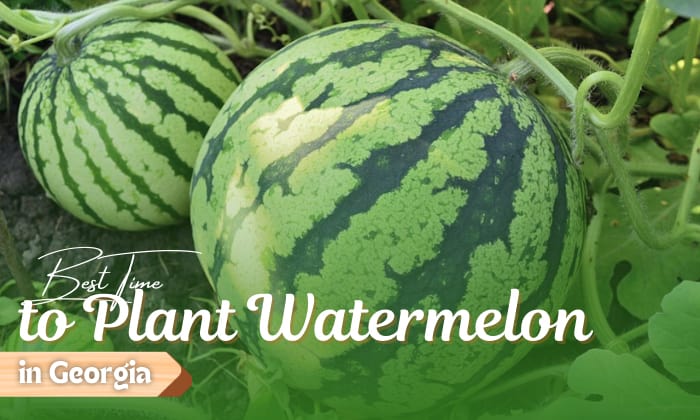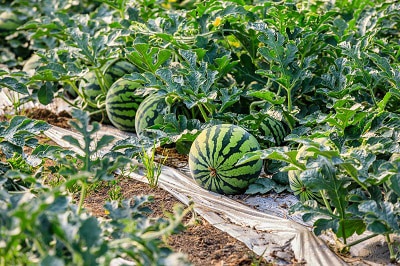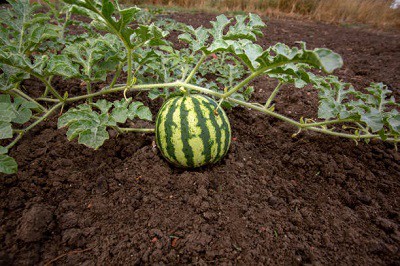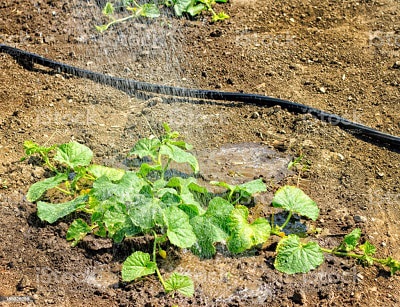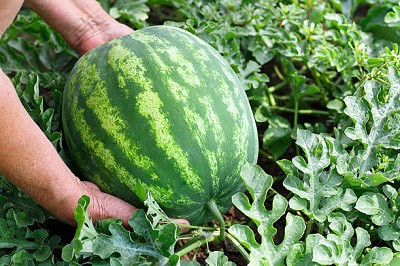Are you planning on growing watermelon in Georgia? Timing is definitely a must for a bountiful harvest. Knowing when to plant watermelon in Georgia is one of the key ingredients for success!
Generally, watermelons thrive best when soil temperatures have reached around 70 degrees Fahrenheit (21°C) outside. However, specific recommendations may vary based on your area and desired watermelon variety.
In Georgia, it is best to start watermelon seeds in late February to early April. With that, let us explore more about its optimal timing!
Table of Contents
The Best Time to Plant Watermelon in Georgia
Want to experience the sweet taste of success with watermelon planting in Georgia? Together, let’s discover the prime window toward the watermelon season.
Expert advice recommends that it is best to sow watermelon seeds after the last frost date. This is because of their intolerance for frost and their love for warm soil. You may also consider planting them by season: Spring and Autumn.
1. Planting Watermelons in Spring
Early Spring is a good time to plant and these range in months March to April. Within this timeframe, Georgia enters a season in which your watermelon seeds can be at their best growing stage.
When you grow watermelon from seed, you must remember that this journey is lengthy and takes patience. It takes a minimum of 70 to 90 days of maturation in ideal weather conditions.
In spring, growing your watermelon seeds indoors for at least 2 to 3 weeks before transferring them outdoors is the way to go. This protects them from the previous frost or snow, so it’s best that they establish themselves after the ground has thawed.
Georgia has a USDA hardiness zone of 6 to 9, so you may opt to transplant your watermelons outside in the garden during May, or in the middle of April and March.
2. Planting Watermelons in the Fall
If you plan to plant your watermelons in the Fall, just know that there is a risk of them reaching colder temperatures in the upcoming winter season that may hinder their growth. But worry not as there are still ways you can make this journey a success!
It is advised that you plant them in the early fall and allow your watermelons to develop completely before harvesting them until winter arrives. Planting them later in the fall would only result in their death and your efforts to waste.
You may opt to plant them in July to early September but not any further than that timeframe for the season of Fall. Going beyond this timeframe will stop the maturation of your watermelons and will eventually lead to their disposal.
5 Tips for Successful Watermelon Planting in Georgia
1. The Appropriate Spacing
When planting your watermelons, it is helpful for their growth that you space them at a three to five-foot distance so that they can grow to their full potential. Putting them too close to each other may interrupt the plant’s development.
If you do not have an ample amount of space in your garden, you may opt to plant them inside containers or beds when you have a bush-type of watermelon seed or invest in vine types and a trellis to grow a trellis watermelon.
There are other varieties of watermelons that may help with the same space issue. A more common one is called icebox watermelon which is a smaller variety that you may be able to fit in your garden.
2. Good-Quality Soil
A good-quality soil for watermelon seeds is that they need to be at the right temperature. This would mean that you have to measure whether the soil has 70 degrees to 80 degrees F.
Another factor to consider is that the soil must have a certain pH range. You can test it and see if the soil is at an ideal pH of 6.0 to 6.8. Furthermore, the soil must also be well-draining and sandy as this is the watermelon’s most preferred recipe.
3. Frequent Fertilization
Utilizing mounds, compost, or nutritious organic matter, not only improves the soil’s condition but also provides a well-prepared environment for your watermelon seeds.
You must begin by placing a height of 8-10 inches of compost or a mound with a width of ten to 12 inches 3 ft apart. They’ll be placed on top 2-3 seeds but also make sure that the soil is dug ¾ to an inch deep for the seeds to be placed in.
If you have rows of watermelon seeds to plant, take note that the distance of the mounds from one another should be 6 ft apart so that the watermelons have enough room to extend and reach further grounds.
4. Following Water Requirements
When growing a watermelon, you’re bound to commit to its watering needs. This would include watering them consistently for about an inch or two every week with full sunlight. You may opt to use a soil drainage ruler for this.
Remember that when watering watermelon seedlings, avoid the harshest of pressures, or else they’ll be washed away. Once they have started to sprout leaves, watering the leaves will also do no good to your plant.
5. Knowing When to Harvest
So how does one know if a watermelon is ready for harvest? There are two ways you can check this.
- Thumping Method
A ripe watermelon may emit a dull or hollow sound when you try to knock, tap, or thump on it. You listen carefully and compare it to back when they weren’t as big. However, this method is the least accurate of the two.
Not only do ripe watermelons make this sound, but also watermelons that are beyond ripe. So it might be a little late already.
- Color Method
Once you start relying on the color of your watermelon, you tend to make one of the most reliable decisions in when to harvest them. You should be checking the bottom of the watermelon for its appearance.
A good indicator would be a yellow color with the curl attached to the stem all dried up. After finding this outcome, you may opt to twist the plant until it’s picked or trim it by their vine.
Conclusion
Amidst Georgia’s sun-kissed embrace, the key to a watermelon’s sweet success lies in perfect timing as to when to plant watermelon in Georgia.
From late February to early April, as the earth warms and the sun graces the land, it’s time to sow the seeds of nature’s candy.
With fertile soil, ample sunlight, and horticultural finesse, you’ll witness the vines dance with delight, bearing luscious fruits that epitomize summertime bliss!
So, let your garden be a canvas for this juicy fruit while anticipating the joyous days of sinking your teeth into a slice of heaven, a watermelon freshly grown, perfectly ripe, and purely Georgian!

Hello, my name is Dorian Goodwin and I have worked as a gardener and groundskeeper for the past 12 years. You can count on me for expert guidance on how to care for your garden. Creating a lush lawn for your front yard or growing an array of colorful flowers for your garden is a labor of love that I fully appreciate. And I am here to help.


